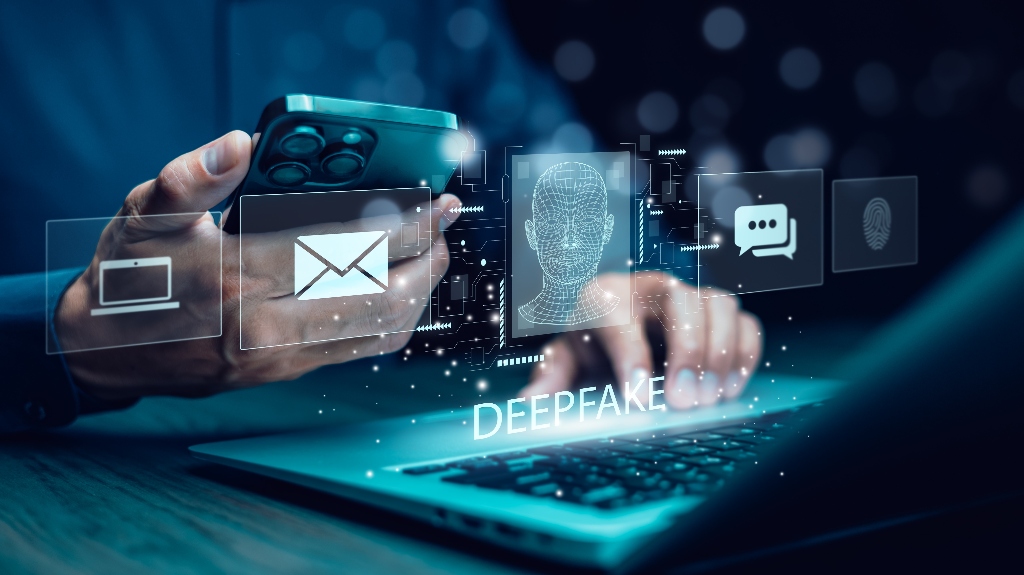
Deepfake technology, which uses artificial intelligence (AI) to create hyper-realistic but entirely fabricated media, has raised significant concerns across industries, particularly in intellectual property law. With deepfakes, it’s now easier than ever to manipulate audio, video, and images to make them appear as though they are authentic, leading to an increased risk of copyright infringement. This blog will explore how deepfake technology impacts copyright claims, the legal implications of using deepfakes without permission, and what businesses and content creators can do to protect their intellectual property.
What is Deepfake Technology?
Deepfake technology leverages AI to generate videos or audio clips that appear to show or say things they never did. By using a form of machine learning called deep learning, the technology analyzes massive amounts of video or audio data and recreates new content that mimics real people or events. While deepfakes are often used for entertainment or creative purposes, their ability to mimic public figures or create convincing fake content poses significant risks for copyright owners.
Copyright Infringement and Deepfakes
One of the most pressing legal concerns surrounding deepfakes is the risk of copyright infringement. A deepfake can infringe on a creator’s copyright by using their original works without permission. For example, deepfake technology can recreate an actor’s likeness without their consent, use copyrighted music or video clips, or generate content that mimics a particular brand’s advertising. If such content is shared without permission, it can lead to legal disputes over the unauthorized use of copyrighted material.
In the entertainment industry, deepfakes pose a unique challenge because they make it easier to impersonate actors, musicians, or other public figures. Imagine a deepfake video featuring an actor’s voice and likeness in a context they never agreed to. This is not only a potential violation of copyright but can also infringe on the actor’s right of publicity and cause reputational damage. As such, copyright holders face new challenges in protecting their work from misuse through deepfake technology.
Legal Risks for Creators and Users of Deepfake Technology
The creators and users of deepfake technology can face significant legal risks. Unauthorized use of copyrighted content, whether for personal, commercial, or political purposes, can result in copyright infringement claims. Additionally, deepfakes can lead to defamation lawsuits or violations of a person’s right of publicity, particularly when the content misrepresents or harms the reputation of the individual or brand involved.
For instance, if a company uses a deepfake to create a commercial that mimics the voice of a famous actor without their permission, the actor may have grounds for both copyright infringement and right of publicity claims. Similarly, individuals or companies that create and distribute deepfake content may find themselves facing hefty fines and reputational damage.
Defenses to Copyright Infringement in Deepfake Cases
In some cases, defendants in deepfake-related copyright lawsuits may assert defenses like fair use, parody, or transformative use. Fair use allows for limited use of copyrighted content without permission for purposes like commentary, criticism, or news reporting. Parody, which is a form of fair use, could apply when the deepfake alters the original work in a way that comments on or critiques the original content. However, these defenses are not always successful, and courts are likely to scrutinize the intent and effect of the deepfake content.
How to Protect Your Copyrighted Works Against Deepfake Misuse
For content creators, businesses, and media companies, protecting against deepfake infringement is becoming increasingly important. One way to safeguard intellectual property is through digital watermarking, which embeds an invisible code into digital content. This can help track unauthorized use of copyrighted works, including deepfakes. Additionally, using AI-powered tools to detect altered media can be an effective way to spot deepfakes and protect your brand’s reputation.
Another important step is monitoring the web and social media platforms for unauthorized deepfake content. With the rise of deepfake technology, the ability to detect and respond to misuse quickly is crucial for minimizing legal and reputational risks.
The Future of Copyright Law in the Age of Deepfakes
As deepfake technology continues to evolve, copyright law may need to adapt to address these new challenges. In the future, we may see additional regulations or legal frameworks aimed at protecting against the misuse of digital media. For example, lawmakers could consider developing specific provisions for deepfake-related copyright infringement or expanding the scope of the right of publicity to cover AI-generated likenesses.
Deepfake technology has opened new doors for creativity but also brought new challenges in copyright protection. For businesses, content creators, and media companies, understanding the risks and legal implications of deepfake technology is crucial to safeguarding intellectual property. Taking steps to protect your works and monitor for unauthorized use can help mitigate the risks posed by this emerging technology. If you are concerned about deepfake-related copyright infringement or need help navigating the complexities of intellectual property law, contact our law firm today to learn how we can help protect your creative assets.
Related Posts:
Thomson Reuters vs. ROSS Intelligence: A Pivotal Copyright Case for AI and Legal Tech
